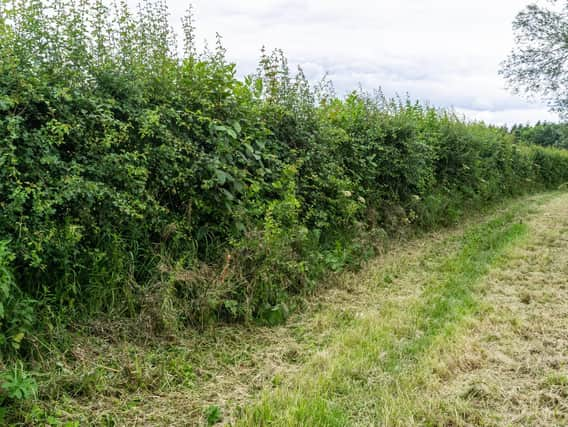"Groundbreaking" project which has "huge national potential" to increase the amount of carbon stored in hedgerows gets a funding boost


The Hedgerow Carbon Code, which is being developed by the Game and Wildlife Conservation Trust (GWCT), has been given a government grant of more than £80,000 to encourage hedgerow habitat and develop a tool to calculate its carbon capture potential.
The project is one of just 27 to receive funds from the £10m Natural Environment Investment Readiness Fund. Dr Alistair Leake, director of the Allerton Project, GWCT’s demonstration farm, says developing the Code has “huge national potential” to enable farmers to increase the amount of carbon stored in their hedgerows and to trade carbon credits.
Advertisement
Hide AdAdvertisement
Hide Ad“Applied across a national scale, there is scope to deliver more than £60m of income to the farming community through carbon credits for hedgerow management and planting,” he said.
Dr Leake explained that hedgerows sequester carbon at twice the rate of woodland because of their three-dimensional structure adding that England’s hedges already store nine million tonnes of carbon.
The Code will include a tool which will enable the carbon stored in a hedge to be calculated and verified, “incentivising” land managers to plant and manage hedgerows which will be a key part of the Sustainable Farming Incentive, one of three schemes which makes up the new ‘public money for public goods’ Environment Land Management Scheme.
The GWCT said the project would provide an “innovative new approach to hedgerows” and would work in a similar way to the Woodland Carbon Code, becoming the quality assurance standard for hedgerows and aiming to generate independently verified hedgerow carbon credits.
Advertisement
Hide AdAdvertisement
Hide AdIt will also have the potential to be developed further to monitor hedgerow biodiversity for calculating biodiversity credits.
“This award means our team, who are experienced in developing nature-based solutions, can push ahead with this innovative project,” said Dr Leake.
The size, structure and management regime will all influence the amount of carbon stored in hedgerows. Carbon also builds up on the soil surface through hedge leaf-litter and is drawn down and stored in the soil by earthworms.
The project team will create a matrix to enable land managers to calculate the contribution each hedge makes to carbon storage and submit carbon potential for verification under the code.
Advertisement
Hide AdAdvertisement
Hide AdThe most recent figures estimate there are more than 400,000 km (250,000 miles) of managed hedgerows in England – 100 times longer than our motorways – with remnants of a further 145,000 km of hedges and tree lines.
The GWCT said increasing the height and width of hedges has the potential to boost the nine million tonnes of carbon stored.
“Incentivising farmers, landowners and councils to maximise the potential of hedges will benefit much more than carbon storage,” Dr Leake said.
“Well-positioned hedges can reduce surface run-off, improve water quality, remove harmful air pollution, provide flood mitigation, and support over 600 different plants, 1,500 insects, 65 birds and 20 mammals species.”